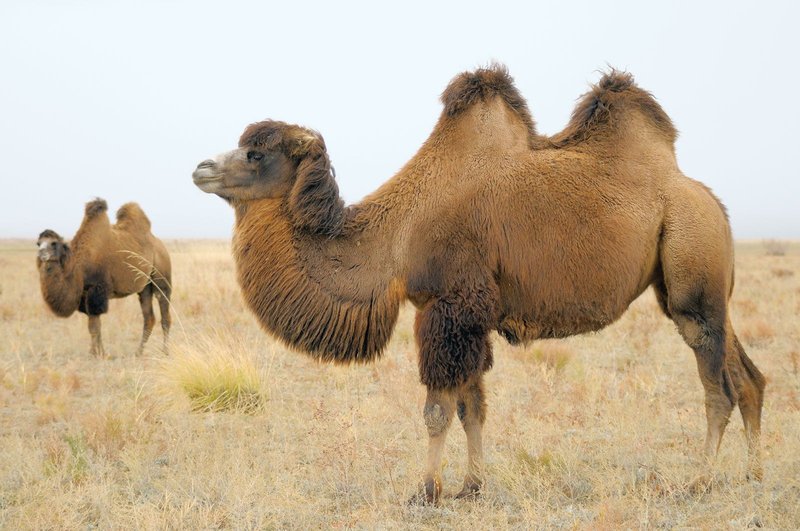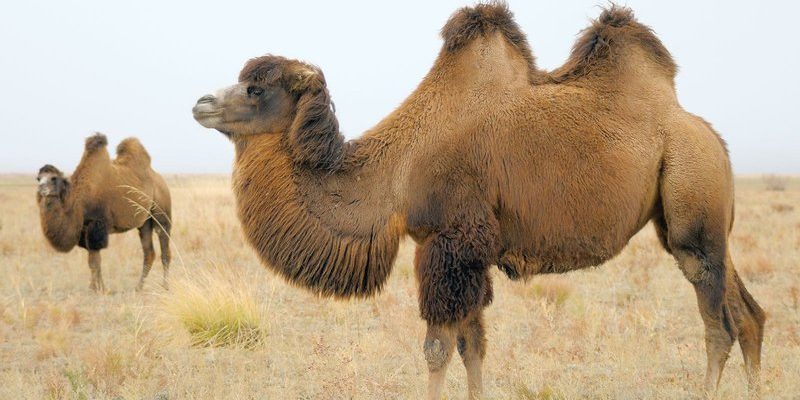
Imagine a creature that’s perfectly built to survive in some of the harshest environments on Earth. That’s the Bactrian Camel for you! This remarkable animal, with its two majestic humps, is a master of adaptation. While its cousin, the Dromedary Camel, is commonly seen in warmer regions, the Bactrian Camel thrives in the cold deserts of Central Asia, like Mongolia and parts of China. So, what makes this camel so special? Let’s dive in and explore its fascinating traits and behaviors.
The Bactrian Camel is not just any ordinary camel. It can withstand extreme temperatures, ranging from scorching hot days to freezing nights. They’re built for endurance, boasting bodies that can go long periods without water, making them perfect companions for travelers and nomadic tribes. You might say they are the ultimate survival experts of the animal kingdom!
Physical Characteristics
One of the most striking features of the Bactrian Camel is its two humps. You might be curious why they have two instead of one. Well, these humps store fat, which the camel can convert into energy and water when food is scarce. Those humps can weigh up to 80 pounds when fully loaded! When it comes to size, a fully grown Bactrian Camel can stand about 6 to 8 feet tall and weigh between 1,000 to 2,200 pounds—making them quite the sight!
These camels also have unique adaptations that help them survive in their harsh environments. Their thick, double-layered coat keeps them warm during the ice-cold nights of the desert. In the summer, they shed their fur to cool off, much like how we change our wardrobes with the seasons. Their long legs and wide, padded feet allow them to travel long distances on the sandy terrain, much like how we wear comfortable shoes for long walks.
Quick Facts About the Bactrian Camel
| Common Name: | Bactrian Camel |
| Scientific Name: | camelus bactrianus |
| Height: | 6 to 8 feet |
| Weight: | 1,000 to 2,200 lbs |
| Habitat: | Cold deserts of Central Asia |
| Diet: | Herbivore (grasses, shrubs) |
| Lifespan: | 40 to 50 years in captivity |
| Speed: | Up to 40 mph |
Habitat and Distribution
The Bactrian Camel primarily inhabits the steppes of Mongolia and the deserts of China. You might picture vast, open plains or rugged mountain terrains; that’s their home! These camels are well-suited to endure the climatic extremes of their environment, surviving both scorching afternoons and bone-chilling nights. Their thick coats keep them warm in winter and cool during summer, making them highly adaptable.
As nomadic animals, Bactrian Camels are often found traveling in herds. This social behavior isn’t just for companionship; it also provides safety from predators like wolves and snow leopards. Their keen senses help them detect danger from miles away. Imagine being part of a team that works together for survival—these camels do just that! They roam vast distances to find food and water, often guided by their instinctual understanding of their environment.
Diet and Feeding Habits
When it comes to food, the Bactrian Camel is a true opportunist. As herbivores, they enjoy a diet that consists mainly of grasses, shrubs, and other desert vegetation. You might be surprised to learn that they can eat thorny plants that many other animals would avoid. Their tough mouths are designed to handle rough, prickly food, allowing them to thrive where other creatures might struggle.
Bactrian Camels are known to go for days without drinking water. They can extract moisture from the plants they eat, which is a vital skill for survival in arid conditions. And if they do find water, they can drink up to 30 gallons in one go! It’s like a hot day for you when you see a swimming pool—when they spot water, it’s a true celebration!
Behavior and Social Structure
The Bactrian Camel is not just a solitary creature. They are social animals and usually travel in small groups. Within these groups, you’ll find a fascinating social structure. These camels are known for their strong bonds, often seen grooming one another or even playing together—much like how we enjoy hanging out with friends. Dominance and hierarchy play roles in their interactions, but there’s a level of cooperation that helps the group thrive.
During the breeding season, male Bactrian Camels can become quite competitive, showcasing their strength to attract females. This can lead to some intense battles, but they’re mostly just showing off. It’s akin to a sports competition where everyone’s showcasing their talents but with the goal of winning a mate. This social behavior ensures the continuation of their genetics and is essential for maintaining a healthy population.
Conservation Status
Unfortunately, the Bactrian Camel is facing significant threats in the wild. Habitat loss due to climate change and human activity has led to a decline in their numbers. To put it in perspective, there are two types of Bactrian Camels: the domestic ones, which are quite common, and the wild Bactrian Camels, which are critically endangered. Wild populations are estimated to be fewer than 1,000 individuals remaining in their natural habitats.
Efforts are being made to conserve these amazing animals. Various organizations are working to protect their natural habitats and raise awareness about the threats they face. You can think of this as a rescue mission—many people are dedicated to ensuring that Bactrian Camels continue to roam the earth, just like how we work to conserve other endangered species. Supporting conservation efforts, like wildlife reserves, can make a significant difference for the future of these camels.
Interesting Facts About Bactrian Camels
Let’s wrap things up with some fun and surprising facts about Bactrian Camels that you might not know! First, did you know that these camels can close their nostrils during sandstorms? This nifty adaptation keeps their lungs safe from dust. It’s like having a built-in protective gear!
Second, Bactrian Camels can tolerate body temperature changes. They can let their body temperature rise in the heat of the day without sweating until it’s necessary. It’s their way of conserving water, much like how you might hold off on drinking water until you’re really thirsty.
Lastly, these camels have been domesticated for thousands of years. They’ve played critical roles in human history, serving as pack animals for traders on the Silk Road. Imagine the stories they could tell if they could talk! Their historic significance is a reminder of how intertwined animals and humans have been throughout time.
FAQ
What are the main differences between Bactrian and Dromedary camels?
The primary difference between Bactrian and Dromedary camels lies in the number of humps. While Bactrian Camels have two humps, Dromedaries only have one. This is primarily due to their different adaptations to their environments: Dromedaries are more suited for hot, arid regions, while Bactrians thrive in cold, harsh climates. Additionally, their body shapes and sizes differ slightly, with Bactrian Camels being stockier and heavier.
How long can Bactrian Camels go without water?
Bactrian Camels are incredibly resilient and can survive without water for several days, depending on their activity level and environmental conditions. In general, they can go up to about 5 to 7 days without drinking. However, when they do find water, they can consume a staggering amount—up to 30 gallons in one go! This remarkable ability allows them to thrive in arid regions where water sources are scarce.
Are Bactrian Camels social animals?
Yes, Bactrian Camels are very social creatures. They often travel in small herds, exhibiting strong social bonds with one another. These herds provide safety and support, which is crucial for their survival. Within these groups, they communicate and cooperate, much like how humans do. Their social interactions include grooming and playing, which strengthens their relationships.
What is the average lifespan of a Bactrian Camel?
In captivity, Bactrian Camels can live a long life, often reaching ages between 40 to 50 years. Factors such as health care, diet, and living conditions play a significant role in their longevity. In the wild, however, their lifespan may be shorter due to predation and environmental challenges. Just like humans, their quality of life significantly influences their longevity.
How are Bactrian Camels adapted to their environment?
Bactrian Camels have several remarkable adaptations that help them survive in harsh climates. Their thick, double-layered coats protect them from extreme temperatures, keeping them warm in freezing conditions. Additionally, their ability to shed fur in warmer months helps them cope with the heat. They can also tolerate significant temperature fluctuations, allowing them to thrive in environments that many other animals find inhospitable.
Why are Bactrian Camels considered endangered?
Bactrian Camels, particularly the wild ones, are considered critically endangered due to various factors. Habitat loss from human activities, such as agriculture and urbanization, poses significant threats. Climate change also affects their environment, impacting their ability to find food and water. Conservation initiatives are crucial to protect their remaining populations and restore their habitats, ensuring that these remarkable creatures do not vanish from our planet.
Can Bactrian Camels be domesticated?
Bactrian Camels have been domesticated for thousands of years, serving humans in various capacities. They are often used as pack animals, transporting goods across rugged terrains. Their strength and endurance make them excellent companions for nomadic communities. Domesticated Bactrian Camels are bred to maintain specific traits that benefit human use, emphasizing their importance in cultures where they are present.
What role do Bactrian Camels play in their ecosystem?
Bactrian Camels play a vital role in their ecosystem by helping to maintain the vegetation balance in their habitats. As herbivores, they graze on grasses and shrubs, which promotes healthy plant growth. Their movement across the landscape also helps with seed dispersal, contributing to floral diversity. By keeping the ecosystem in check, Bactrian Camels support many other species that share their environment.
How do Bactrian Camels communicate?
Bactrian Camels communicate through a variety of vocalizations, body language, and even facial expressions. They might grunt, roar, or make other sounds to convey their feelings or alert others to danger. Their body language is equally telling; for instance, a camel displaying a relaxed posture may indicate comfort, while an agitated camel could show signs of stress. Understanding these cues is essential for anyone working with or observing these amazing animals.
Are there conservation programs for Bactrian Camels?
Yes, numerous conservation programs are working to protect Bactrian Camels, especially the wild populations. Organizations focus on habitat preservation, anti-poaching measures, and raising awareness about their endangered status. Some programs involve breeding initiatives to increase their population and restore genetic diversity. By supporting conservation efforts, people can contribute to the survival of these unique animals and help ensure that they continue to thrive for generations to come.
What behaviors do Bactrian Camels display in the wild?
In the wild, Bactrian Camels exhibit a range of behaviors that reflect their adaptability. They can be seen foraging for food, traveling long distances to locate water, and engaging in social interactions within their herds. Their ability to recognize their surroundings helps them navigate their environment effectively. Additionally, you might observe their alertness to potential threats, showcasing their innate survival instincts.
Can Bactrian Camels be found in zoos?
Yes, Bactrian Camels can be found in many zoos and wildlife parks worldwide. These facilities often participate in breeding programs aimed at preserving the species and educating the public about their importance. Visiting a zoo can provide you with a unique opportunity to learn more about these incredible animals up close. Many zoos also contribute to conservation efforts, making your visit not just enjoyable but also meaningful.

